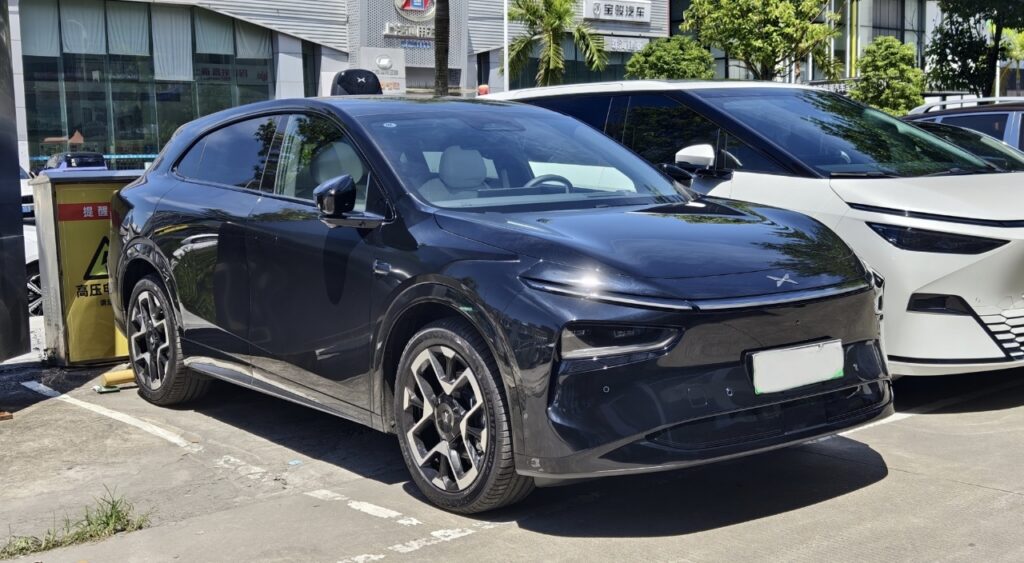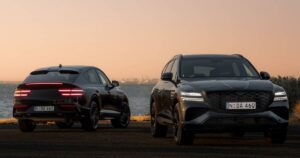
In a rapidly evolving automotive landscape dominated by Tesla’s Model Y and emerging competitors like the Xiaomi YU7, Xpeng’s new G7 has entered the mid-size electric vehicle (EV) SUV market with a compelling blend of intelligent driving capabilities, a premium cabin experience, and efficient design. Officially launched on July 3, the G7 starts at 195,800 yuan (approximately 27,325 USD) and aims to position itself above the G6 model, boasting a length of 4,892 mm and a wheelbase of 2,890 mm.
The G7 introduces Xpeng’s second-generation “X Face” design, featuring a distinctive split headlamp configuration and an active grille that adjusts for optimal cooling. Available in Max and Ultra trims, the vehicle is powered by a 218 kW rear motor and offers two battery options: 68.5 kWh and 80.8 kWh, delivering a CLTC-rated range of up to 702 km on 18-inch wheels. Xpeng claims the G7 supports whole-vision-based Level 3 driving through its XNGP platform, powered by up to three Turing chips with a combined computing power of 2,250 TOPS, depending on the trim.
Design and Features: A Blend of Elegance and Utility
The G7’s exterior design stands out with its wide light bar and vertical split headlamps integrated into the air ducts. Unlike many SUVs that sacrifice style for space, the G7 maintains an elegant roofline without compromising cargo capacity or rear headroom. Key exterior features include 20-inch wheels with Michelin Pilot Sport EV tyres, soft-close frameless doors, and a hidden rear wiper discreetly placed under the spoiler. The tail section is completed with a full-width LED light bar and dynamic indicator elements.
Interior Comfort and Technology
Inside, the G7’s Max trim offers a luxurious experience with a layered dashboard design and real wood accents. The 87-inch AR-HUD system, developed in collaboration with Huawei, projects augmented reality navigation and lane-level data, even in bright sunlight, thanks to its impressive 12,000-nit brightness. A 15.6-inch central floating screen replaces the traditional digital gauge cluster, while rear passengers enjoy an 8-inch entertainment and control panel.
Xpeng has prioritized rear-seat comfort, providing massage, ventilation, and heating functions on all four seats. Additional amenities include a cooled wireless charging pad, a fold-out tray table, and a reclining seat with electric adjustment for rear passengers. Storage is generous, with 819 litres available in standard configuration and up to 2,277 litres with the rear seats folded. The cargo area also features an underfloor compartment, 3-kg-rated hooks, and a 12V outlet for accessories.
Driving Experience: Comfort Meets Technology
On the road, the G7 prioritizes comfort with its dual-chamber air suspension, which features predictive damping that scans up to 30 meters ahead to cushion road imperfections. While the energy recovery tuning may feel aggressive, it is a detail that Xpeng could refine before mass production. Drivers can choose between comfort, standard, and sport suspension modes, with each offering a distinct driving experience.
The G7’s steering is light yet precise, with enhanced forward visibility due to a low cowl and narrow A-pillars. The cabin remains quiet at speed, thanks to double-laminated acoustic glass in the front and privacy glass in the rear. The XNGP driving assistant, operating without lidar, relies solely on camera sensors and two Turing chips in the Max trim, offering a compute performance that rivals many lidar-based systems.
“During our test drive, the system handled multi-lane intersections, unmarked detours, roadside vendors, and unsignaled crosswalks with confident behavior,” noted an industry expert.
Market Position and Future Prospects
The G7’s introduction comes at a time when the EV market is becoming increasingly competitive, with consumers seeking vehicles that offer a balance of technology, comfort, and value. Xpeng’s focus on intelligent driving and interior comfort positions the G7 as a strong contender for those considering alternatives to mainstream options like the Tesla Model Y or the tech-focused Zeekr 7X.
While the G7’s XNGP system shows promise, it still requires refinement in areas such as auto lane changes during traffic and roundabouts. However, its strengths in interior comfort, configurability, and utility make it an attractive option for families and tech-savvy buyers alike.
As Xpeng continues to innovate and refine its offerings, the G7 represents a significant step forward in the company’s quest to close the gap with industry leaders like Tesla. For those in the market for a mid-size EV SUV that doesn’t compromise on design or intelligence, the G7 offers a compelling package.
Stay tuned for next week’s Sunday China Drive at Car News China, where we will continue to provide first-person evaluations of the latest Chinese automotive innovations.






